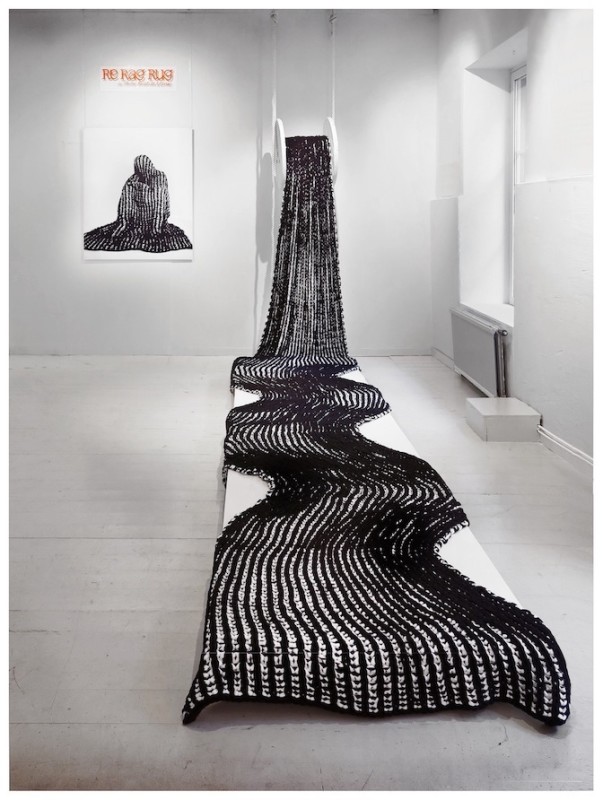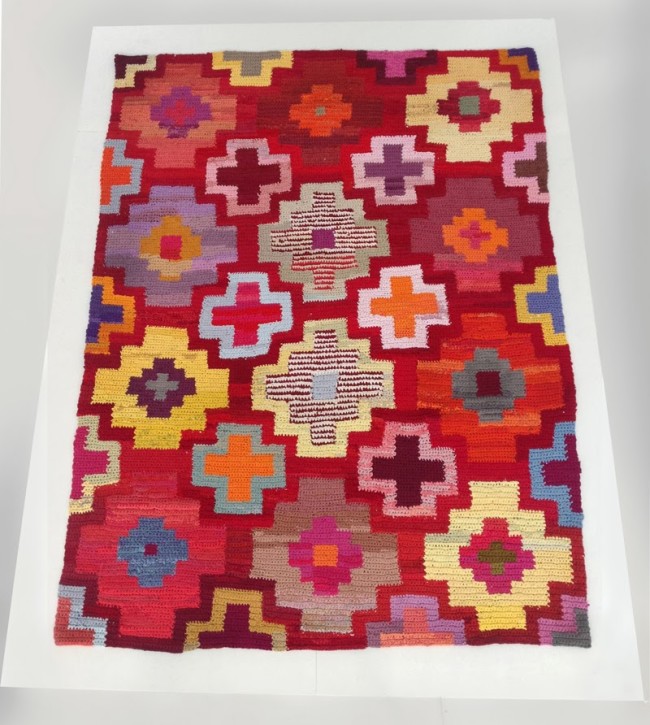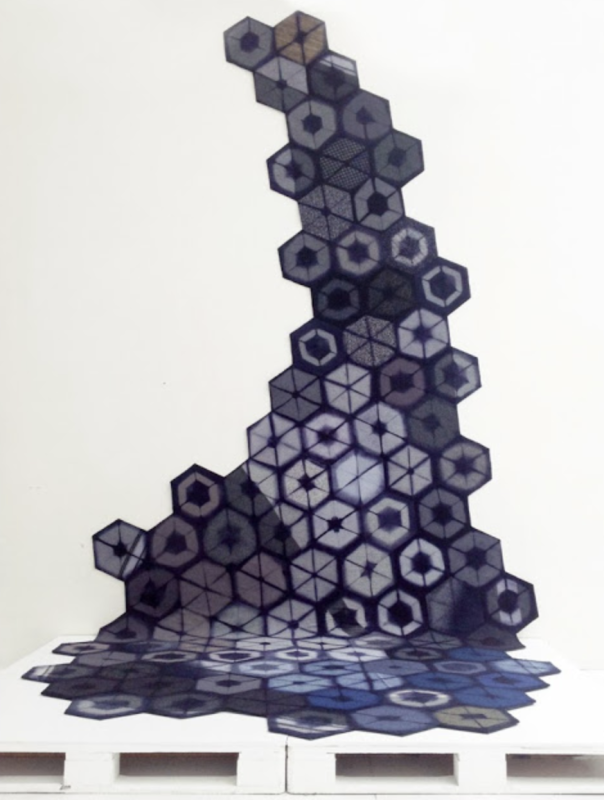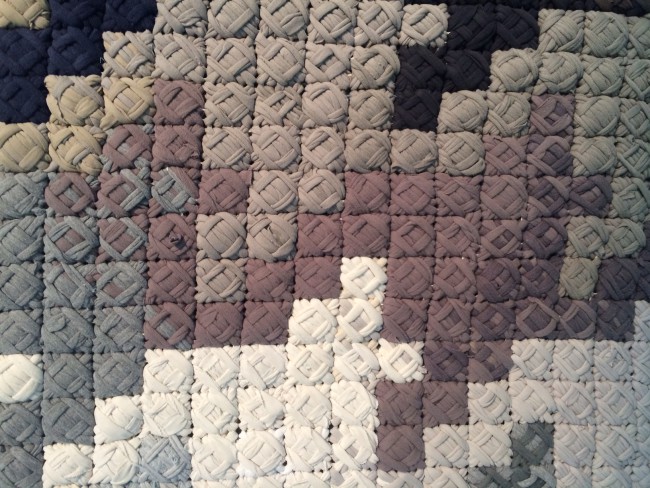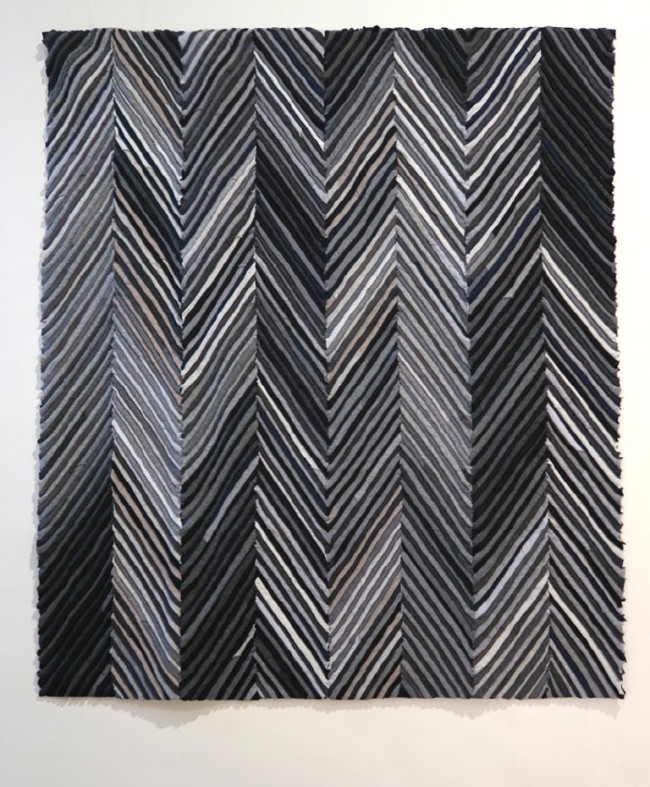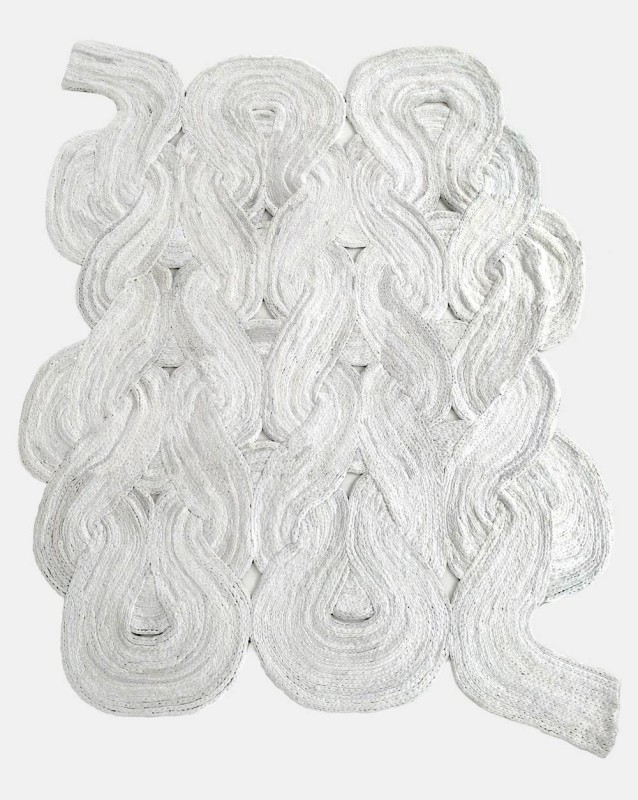
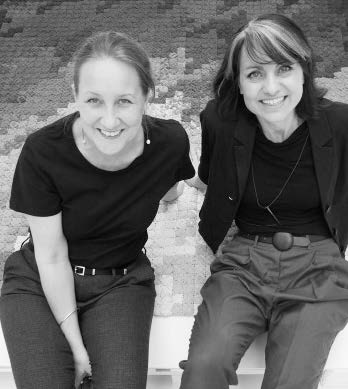
Behind the Studio Brieditis & Evans are Swedish natives, Katarina Brieditis and Katarina Evans. Since 2003, the artist duo has dedicated itself to textile art, working at an intersection between art, design and craftsmanship, giving birth to artistic projects with social and ethical dimensions. By combining their experiences in product design, crafts, product development and textile recycling, Studio Brieditis & Evans constantly seek to find new expressions in textile, by experimenting with different techniques and materials. The idea of durability is key to Briedetis & Evans who through their mastery of craft show how a traditionally common material can gain nobility and artistic value through exquisite craftsmanship. In 2003, Brieditis & Evans started the “Do Redo” project together with Östergötlands Ullspinneri, which resulted in a book on recycling and exhibitions in Sweden and Japan. Their lectures and workshops on “The Art of Slaughtering a Sweater” have been held worldwide, in Sweden, Norway, Denmark, Finland, Japan and USA. They later launched the Re Rag Rug project, culminating in a solo exhibition at the Swedish Cultural Institute in Paris, as well as exhibitions worldwide, including in Hong Kong and Sweden. One of the works, Off Piste, is now housed in the French National Collections of the Musée des Arts Décoratifs, Paris, France.
The Re Rag Rug Project
Studio Brieditis & Evans began their experimental Re Rag Rug project in 2012, exploring the social and ecological sustainability of the rug. Studio Brieditis & Evans’ objective for this project was to make twelve different tapestries and rugs using various techniques with one thing in common: all of them were made from recycled textiles, such as cotton t-shirts, wool sweaters and tweed jackets. Here are some of their global ideas around the project:
The rug is the ultimate textile furnishing, in Brieditis & Evans’ opinion. Through times it has been used on floors, beds, walls, tables and roofs. All over the world, rugs protect people from draught and cold. They have a major impact on the acoustics of a room, they gather groups of furniture in a space, create a room within the room and serve as aesthetic features. Rugs should withstand being stood on, walked on and crawled on, and they are important bearers of culture for many people.
The craft. By using different types of rags in combination with a variety of sewing, plaiting, crocheting, knitting, macramé, rolling, cutting, appliqué, embroidery, structure-and-relief effects, three dimensionality, colouring and dyeing techniques, Studio Brieditis & Evans sought to create twelve new qualities and expressions of rugs.
The material used in the Re Rag Rug project is considered worthless: Industrial waste, excess materials, and discarded t-shirts and woolen sweaters from the Salvation Army’s chain of secondhand stores. The clothing donated is a waste that cannot be sold i.e. torn and ripped sweaters or shrunken woolen clothes.
All material is good material if only you find the right use for it. Man has always sourced materials in nature and the nearby environment. In the urban lifestyle of today there are mountains of waste; it is like a second nature. T-shirts and sweaters are mass-produced for global consumption. All over the world they are bought, used and thrown away. If new ways can be found for using and refining materials, this waste can become a resource.
Studio Brieditis & Evans’ work is carried out in a free and experimental manner, but the rugs they create have a high artistic value and the fact that they are made out of recycled materials is a bonus.
The design process starts with their hands and the material, to find techniques that bring the best out of the unique properties of each material. This leads them to the artistic process, where they find possibilities and qualities to develop with the potential of being refined and transformed. The limited colour palette provided by the selected materials that are given to Brieditis & Evans’ is an additional challenge that they find inspiring.
Re Rag Rug is an example of how design is a way to work with sustainability, and shows that a seemingly worthless material can be elevated, gaining nobility and artistic value. Many of the rugs are made with craft techniques that do not require large spaces or machines, that could potentially be manufactured in cottage industry settings in textile producing countries. Such a production method, using waste, is not only ecologically sustainable but also socially sustainable — as it becomes a platform for developing crafts and creating jobs.
The twelve Re Rag Rugs were later exhibited internationally, in Sweden, Hong Kong and France. The travelling project allowed Studio Brieditis & Evans to experience how the rug is so important to many people and different cultures. Not only was there a global interest in design and textile crafts, but equally in the questioning of consumption issues and the importance of recycled materials.



